
02-01-2026 17:43
MARICEL PATINOHi there, although I couldn't see the fruitbody, I

04-01-2026 17:45
 Stephen Martin Mifsud
Stephen Martin Mifsud
I was happy to find these orange asmocyetes which

03-01-2026 13:08
Niek SchrierHi all,We found groups of perithecia on a Lecanora

29-12-2025 17:44
Isabelle CharissouBonjour,J'aimerais savoir si d'autres personnes au

01-01-2026 18:35
Original loamy soil aside a artificial lake.The co

31-12-2025 19:27
Collected from loamy soil, at waterside (completel
Encore un indéterminé de l'an dernier, d'une réserve dont je m'occupe (réserve naturelle de Wilbrote, région de Durbuy, Calestienne, prov. LX, B.). Sur tige morte de Hypericum perforatum, le 30.04.12. Non conservé, c'est pour avoir une idée.
Alors là, c'est un bituniqué je pense, mais hormis cela, je donne ma langue au chat!
Fentes -> 0.5 mm, s'ouvrant par déchirure, en groupes. Péridium olive, se déchirant, formant presque une apothécie. Hyménium incolore.
Asques 8-sporés, sp. unisériées ou irrégulièrement bisériées en quinconce. Pas d'appareil apical. Epaisseur x 9-10.5 µ. IKI négatif. Apparemment pas de hamatécium.
Spores hyalines, 1 à 3-septées, (15)17-20 x (4.8)5.5-7 µ. On observe souvent quelque chose que j'ai interprété comme des spores germées, à moins que cela ne soit des conidies (voir photo).
Une idée?
Amitiés - Luc BAILLY.?

I suppose you have what I tried to identify as "Tarbertia" (tentatively but probably wrongly placed in Durelloideae). But there is something quite similar which we identified as Exarmidium inclusum (Hyponectriaceae), which has more perithecioid ascomata.
Click here:
https://www.cubby.com/p/_778a6f3587954e008790666f822f8e4e/7a+Helotiales#7a%20Helotiales/Durella%20group/Tarbertia
https://www.cubby.com/p/_94bc7715309f400391e776656de1b46e/8g+Xylariomycetidae#8g%20Xylariomycetidae/Hyponectriaceae/Exarmidium
I remember we had already a thread on Exarmidium here.
Zotto

http://www.ascofrance.fr/search_forum/12420?
my collection "matched" E. cf. diaphanum.
Regards
Martin
The shape of the spores matches with Tarbertia sp. from Zotto's collections, but yours are too small to fit, so I reject this hypothesis (at least that species).
Martin, what you posted is very similar to what I found. I'll have to check the paper on Exarmidium tomorrow, because Cyberliber seems down atm. Then, I'll tell you if I find something. I wouldn't be that surprised to see a species growing on woody substrates on Hypericum, because Hyericum is quite lignified.
Thanks to both, and cheers - Luc BAILLY.

Zotto
That's a possibility the spores I have are too big due to being overmature: they're germinating.
By the way, I took my notes and I noticed when studying my samples there were sometimes 2 ascomas below the clypeus, witch is mentioned in the paper about Exarmidium (Martin just sent it to me). My sample fits quite well the description of Exarmidium diaphanum. Also, the general shape of the ascoma's fits way better with an Exarmidium.
So, for me, either it's Exarmidium diaphanum, or something very close.
Cheers - LUC.



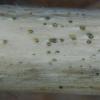
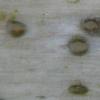
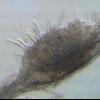
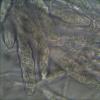
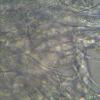

 Exarmidium-diaphanum-18VII2010-en-0001.pdf
Exarmidium-diaphanum-18VII2010-en-0001.pdf